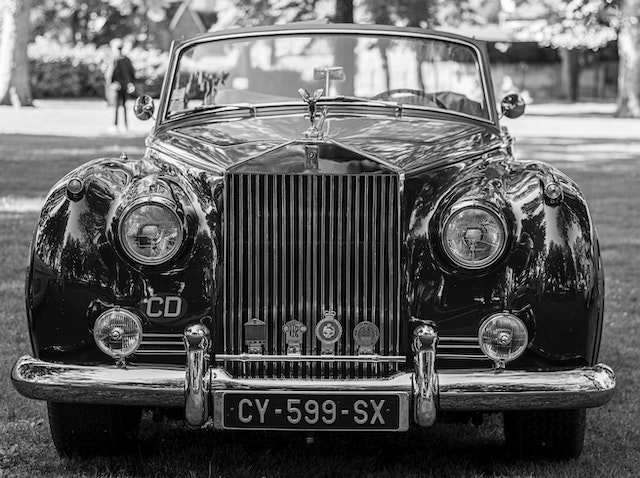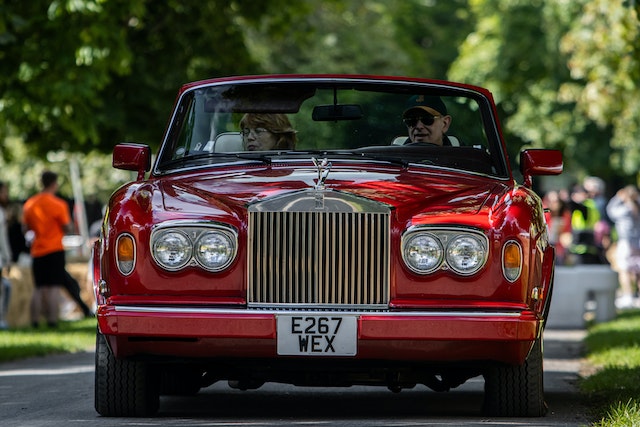The ever-evolving business landscape compels companies to reconsider and reinvent their strategies periodically. One such transformative change that businesses may contemplate is moving their positioning from a budget-oriented brand to a luxury or premium one. Let’s explore the challenges, nuances, and potential rewards of such a strategic pivot.
Table of Contents
Understanding the Motivation behind the Shift
The motivations behind a shift can vary. It could be because of saturated markets, changing demographics, or even a bid to increase profitability. While budget brands cater to a broader audience and often thrive on volume, luxury brands target a niche segment and bank on higher margins.
Target Market Dynamics
A shift from budget to luxury means targeting a completely different demographic. Businesses need to understand the aspirations, desires, and buying behaviours of higher-income groups or luxury seekers. This shift demands an in-depth study of consumer psychology and a complete revamp of market outreach strategies.
Product Reengineering
This is where the real challenge lies. Transitioning to luxury often means enhancing product quality, incorporating superior materials, focusing on finer details, and offering exclusivity. This also means a deep dive into R&D and potentially collaborating with craftsmen or specialists.
Pricing as a Statement
In the luxury domain, price is not just a reflection of cost and margin. It’s a statement of brand value, exclusivity, and prestige. The pricing strategy has to be on point to convey the brand’s new-found premium appeal without alienating potential buyers.
Redefining Brand Identity and Marketing Outreach
Every touch point, from advertisements to social media posts, needs to ooze luxury. This often requires collaborating with premium influencers, hosting exclusive events, and ensuring that every advertisement speaks the language of opulence.
The Distribution Channel Challenge
Luxury brands often limit their availability to maintain exclusivity. This might mean pulling out products from mass-market stores or establishing exclusive brand outlets or boutiques. It’s a fine balance between being accessible and maintaining an aura of exclusivity.
Crafting a Unique Customer Experience
Luxury consumers don’t just buy a product; they buy an experience. Personalized services, exclusive perks, and unparalleled after-sales support become pivotal.
The Risk Factor
This shift is fraught with risks. There’s the potential to alienate the existing customer base. Moreover, a half-hearted or improperly executed shift can damage brand reputation irreparably.
The Potential Upside
If done right, transitioning to luxury can skyrocket brand prestige and profitability. The margins in the luxury segment are often higher, and brand loyalty tends to be stronger.
Shifting business strategies from budget to luxury is not merely about raising price tags. It’s a holistic transformation that impacts every facet of the business, from supply chain dynamics to customer interaction. Success demands meticulous planning, a deep understanding of the new target audience, and consistent execution. But for those who get it right, the rewards – both in terms of brand value and profitability – can be substantial.
Example of Comparing the Shift in Business Strategies from Budget to Luxury
Let’s consider an example using the iconic brand, Apple Inc.
Apple Inc.: Shifting from Budget to Luxury
Apple, renowned for its suite of premium products, has subtly shifted its positioning over the years. Although Apple never strictly targeted the “budget” segment, its earlier devices were more accessible. Over time, they have repositioned as a luxury tech brand. Let’s analyze this journey.
- Initial Positioning and Motivation for Shift:
Apple’s early days, especially during the Steve Jobs era, revolved around creating user-centric, innovative products. The iPod, for instance, was a revolutionary product but priced reasonably. As the brand gained traction, they sensed an opportunity to position their products not just as tech devices but as luxury personal accessories.
- Target Market Dynamics:
Apple began targeting the high-end market segment, which is willing to pay a premium for design, functionality, and brand status. They focused on aspirational buyers who view technology as a fashion statement.
- Product Reengineering:
The introduction of the iPhone saw a combination of superior functionality with sleek design. Their subsequent models focused on premium materials like aluminum and glass, ensuring a luxury look and feel.
- Pricing as a Statement:
As newer iPhone models were introduced, their prices saw an upward trajectory. This not only reflected the technology and design but became a statement of exclusivity.
- Redefining Brand Identity and Marketing Outreach:
Apple’s marketing campaigns, minimalist design language, and exclusive product launches were aimed at establishing it as a premium brand. Their stores, with their architectural designs and layouts, are reminiscent of luxury boutiques.
- The Distribution Channel Challenge:
Apple established exclusive Apple Stores in high-end shopping districts. They also limited the number of third-party retailers that could sell their products, ensuring control over the retail experience.
- Crafting a Unique Customer Experience:
The in-store experience at Apple Stores, with product demos and the Genius Bar, provides customers a unique blend of tech support and shopping experience.
- The Risk Factor:
By elevating the brand to a luxury status, Apple risked alienating a segment of its user base that became accustomed to its more accessible pricing in its early days.
- The Potential Upside:
Apple’s strategy paid off handsomely. They not only increased their profit margins but solidified their position as a luxury tech brand. Their brand loyalty is exceptionally strong, with many customers upgrading to the latest model year after year.
Apple’s strategic shift towards the luxury segment isn’t about being the most accessible, but about being the most aspirational. Their journey showcases the nuances and intricacies involved in moving from a more accessible brand to one that epitomizes luxury in the tech world.
Comparative table outlining various aspects when shifting business strategies from budget to luxury
Here’s a comparative table outlining various aspects when shifting business strategies from budget to luxury and vice versa:
| Aspect | Shifting from Budget to Luxury | Shifting from Luxury to Budget |
|---|---|---|
| Target Market | Transition to targeting higher income consumers, luxury seekers, or aspirational buyers. | Transition to mass market, value seekers, and broader audience. |
| Product Quality | Emphasizing high-quality materials, craftsmanship, and exclusivity. | Focus on affordability, durability, and standard functionality. |
| Price Point | Significant increase; pricing might reflect prestige, exclusivity, and higher quality. | Reduction to make products/services accessible and value-driven. |
| Branding & Marketing | Position brand as premium or luxury with refined aesthetics, narratives, and exclusivity. | Position brand as affordable, value-driven, and accessible. |
| Distribution Channels | Limited distribution; exclusive stores, boutiques, or online platforms with a luxury feel. | Broadened distribution; supermarkets, mass online retailers, or budget stores. |
| Customer Experience | Prioritize personalized services, enhanced after-sales support, and unique experiences. | Streamlined, efficient, and consistent services with potential self-service options. |
| Operational Costs | Potential increase due to high-quality materials, specialized craftsmen, and luxury settings. | Cost optimization, potentially sourcing cheaper materials, and streamlined processes. |
| Margins | Typically higher per unit due to luxury pricing, but volume might be lower. | Typically lower margins, but compensated by higher sales volume. |
| Risks | High expectations from customers, potential alienation of existing budget customers. | Perception of reduced quality, potential alienation of existing luxury customers. |
| Opportunities | Entering a market with potentially higher profit margins, brand prestige, and customer loyalty. | Accessing a larger market share, rapid volume sales, and diversifying customer base. |
While this table provides a general overview, the specific challenges and opportunities will vary based on industry, market conditions, and individual company circumstances.

Frequently Asked Questions (FAQs) About Comparing the Shift in Business Strategies from Budget to Luxury
Frequently Asked Questions (FAQs) About Comparing the Shift in Business Strategies from Budget to Luxury
- Why would a brand want to shift from budget to luxury?
A brand might want to shift to tap into a higher-margin market, elevate brand prestige, cater to a different demographic, or differentiate from competition in a saturated budget market.
- How long does such a transition typically take?
The transition from budget to luxury can span months to years, depending on the brand’s size, market conditions, and the depth of the strategic change.
- Can a brand cater to both budget and luxury markets simultaneously?
Yes, some brands create sub-brands or different product lines to cater to various market segments. For instance, car manufacturers might have both luxury and budget models under different brand names.
- What are the main challenges in transitioning from budget to luxury?
The primary challenges include repositioning the brand, elevating product quality, setting the right pricing strategy, managing potential customer alienation, and meeting elevated customer expectations.
- Does the shift guarantee increased profitability?
No, while luxury markets might offer higher margins, success depends on effective execution of the strategy, market reception, and maintaining the perceived value.
- How does marketing change when shifting to luxury?
Marketing becomes more focused on brand storytelling, emphasizing exclusivity, quality, and the luxury experience. There might also be collaboration with high-end influencers or celebrities.
- Is it possible to revert back if the luxury strategy doesn’t work out?
Yes, though it comes with challenges. Brands might risk diluting their value or confusing their target audience. It requires a well-thought-out repositioning strategy.
- What are the signs that a brand’s shift to luxury is successful?
Signs include increased brand recognition in the luxury segment, positive reception by the target demographic, higher profit margins, and enhanced brand loyalty.
- How do distribution channels change in the transition?
Brands often limit distribution to maintain exclusivity in the luxury market. This might involve pulling out of mass-market stores or setting up exclusive boutiques.
- Do customer service expectations change with the shift?
Absolutely. Luxury consumers expect a higher level of personalized service, unparalleled after-sales support, and unique experiences.
Transitioning from budget to luxury is a significant strategic shift that comes with its set of challenges and opportunities. Brands considering such a shift should be well-informed and prepared for the journey.
Conclusion
The journey from positioning a brand as budget-friendly to one that exudes luxury is both intricate and transformative. This strategic pivot, influenced by changing market conditions, evolving consumer preferences, or the pursuit of higher profit margins, is a testimony to the brand’s adaptability and the dynamic nature of business strategies.
It’s essential to underscore that such a transition is not merely about elevating prices or using superior materials. It’s about crafting a holistic experience that resonates with a new set of consumers while aligning every facet of the business, from product development to marketing, with the new brand ethos. This shift impacts not just the tangible aspects of a product or service, but also the intangibles – the brand narrative, the emotions it evokes, and the exclusivity it promises.
However, as brands navigate this transformation, challenges are inevitable. The risk of alienating existing customers, the pressures of meeting heightened expectations, and the nuances of crafting an authentic luxury experience are significant. Yet, for those who strategize judiciously and execute flawlessly, the rewards can be substantial, both in terms of financial returns and brand prestige.
How to Change Business Strategies? Shifting business strategies from budget to luxury is a testament to the ever-evolving business landscape. It embodies the continuous quest of brands to innovate, differentiate, and resonate, ensuring they remain relevant and desired in an ever-competitive marketplace.











Leave a Reply